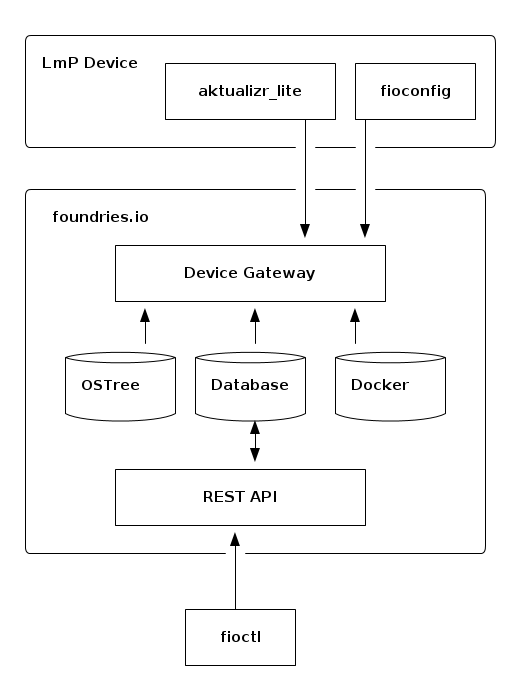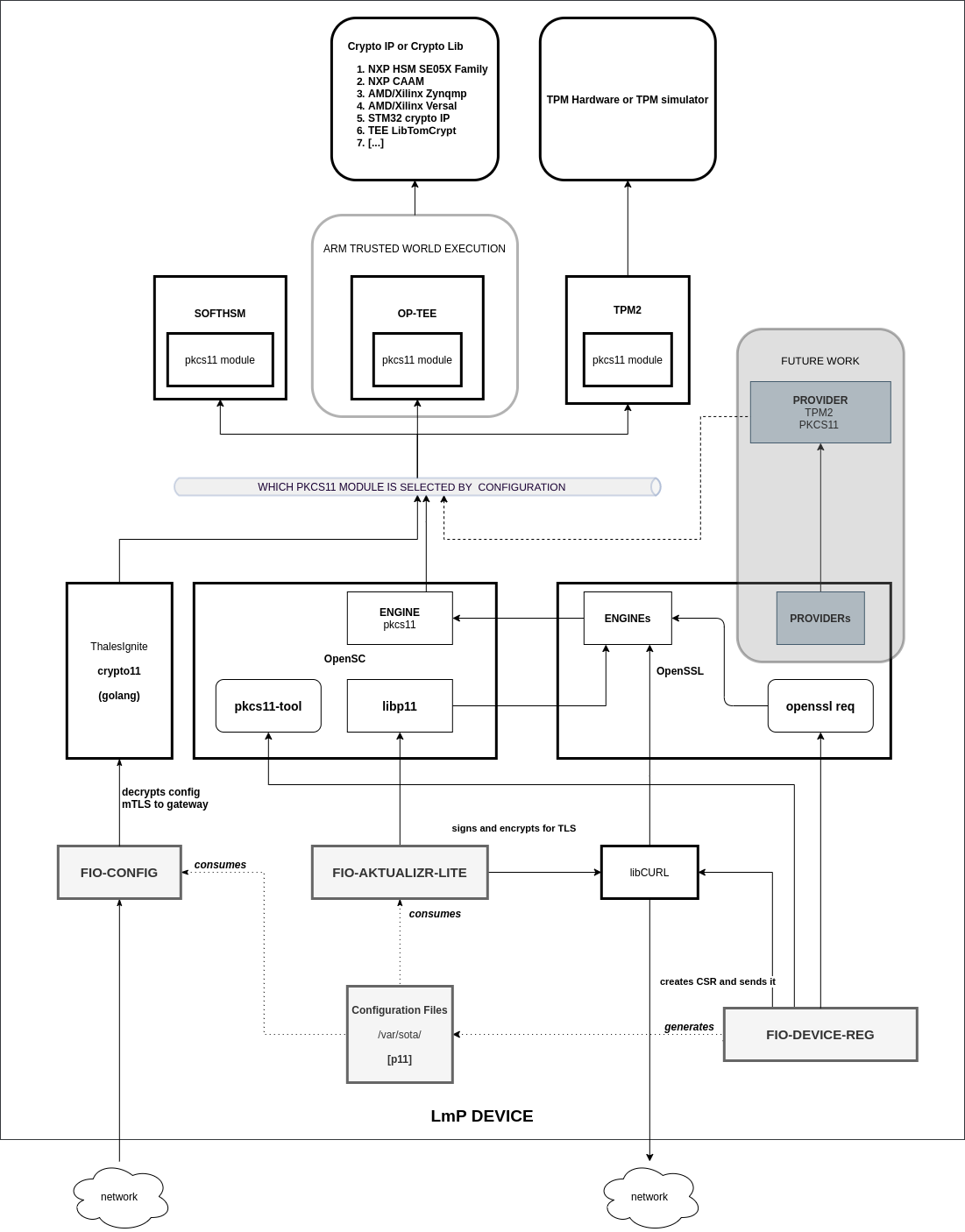Architecture Overview#
At a high level, the system consists of three entities:
Devices talk to the device gateway using mutual TLS. The device gateway provides a set of REST APIs to support:
Docker authentication.
Aktualizr-lite and fioconfig run as separate daemons, periodically polling the device gateway with HTTP GET requests at configurable intervals.
Due to the fact devices are polling the server, REST API changes requested by Fioctl® tooling happen asynchronously.
How A Device Uses Security Hardware#
An LmP device uses Hardware Security Modules (HSM), Trusted Platform Module (TPM) devices, or Trusted Execution Environments (TEE) via the Public-Key Cryptography Standards #11 (PKCS#11) API.
They provide the guarantee that secrets will not be leaked and that communications will be secure. Certain keys will be provisioned during device manufacturing.
How A Device Finds Updates#
Aktualizr-lite uses TUF to find and validate the available Targets that a device may install. Aktualizr-lite will periodically check-in using this high level logic:
Asks if a
new root.jsonexists. This allows a device to know about key rotations before going further. This call is almost always going to result in an HTTP 404 response.Asks for the
timestamp.jsonmetadata. If this file has not changed, there is no need to ask for more metadata—nothing has changed.Asks for the
snapshot.jsonmetadata. If this file has not changed, there is no need to ask for more metadata—the targets have not changed.Ask for the
targets.jsonmetadata. At this point, the device can see if a new Target is available for installation.



